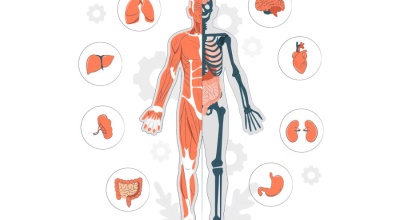You are free download and share the list of learning activities that help kids awareness for saving energy at home.
Learn the fundamental concepts behind renewable energy sources and energy efficiency through short videos.
Energy Star® Kids Activities & Resources
Improving your home's energy efficiency with ENERGY STAR can help to lower high energy bills, improve comfort and reduce greenhouse gas emissions. Learn about the many ways to save in your home and track your progress with "My ENERGY STAR" - your new dashboard to savings.
Read More
Home Energy Yardstick
Assess the energy efficiency of your home and see how it measures up:
EPA's Home Energy Yardstick provides a simple assessment of your home's annual energy use compared to similar homes. By answering a few basic questions about your home, you can get:
- Your home's Home Energy Yardstick score (on a scale of 1 to 10);
- Insights into how much of your home's energy use is related to heating and cooling versus other everyday uses like appliances, lighting, and hot water;
- Links to guidance from ENERGY STAR on how to increase your home's score, improve comfort, and lower utility bills; and
- An estimate of your home's annual carbon emissions.
Read More
Public Downloads
All items are free to view, share, and download.
Public Downloads - Español (Spanish)
When available, we provide all our content with a Spanish version in our public download section. You can find additional material from sources listed in all our articles.
Download Energy Efficiency Activities, Information and Resources
Download Energy Efficiency Activities
 A Beautiful World Starts with You Smart Energy Puzzles
A Beautiful World Starts with You Smart Energy Puzzles
 A Beautiful World Starts with You Smart Energy Puzzles - Spanish
A Beautiful World Starts with You Smart Energy Puzzles - Spanish
 Energy Awareness Activity Book
Energy Awareness Activity Book
 Energy Conservation Worksheet
Energy Conservation Worksheet
 Energy Hog Jeopardy Gameshow PowerPoint
Energy Hog Jeopardy Gameshow PowerPoint
 Energy Hog Scavenger Hunt
Energy Hog Scavenger Hunt
 Energy Hog Scavenger Hunt - Spanish
Energy Hog Scavenger Hunt - Spanish
 Exploring Solar Energy Student Guide, Activities, and Resources
Exploring Solar Energy Student Guide, Activities, and Resources
 Home Energy Audit Student Activity
Home Energy Audit Student Activity
 Lorax Energy Helper Activity Book
Lorax Energy Helper Activity Book
 Lorax Energy Helper Checklist Postcards
Lorax Energy Helper Checklist Postcards
 Lorax Energy Helper Checklist Poster
Lorax Energy Helper Checklist Poster
 Renewable Energy Activities
Renewable Energy Activities
 Renewable Energy Kids Activities and Resources
Renewable Energy Kids Activities and Resources
 Team Energy Star Activity Book
Team Energy Star Activity Book
Download Energy Efficiency Coloring Books
 Bioenergy Energy Coloring Book
Bioenergy Energy Coloring Book
 Energy Efficient Coloring Book
Energy Efficient Coloring Book
 Energy Hog Coloring Book
Energy Hog Coloring Book
 Sources of Energy Coloring Book
Sources of Energy Coloring Book
Other Resources:
Are you ready to increase your home's energy efficiency and all-around comfort? With the ENERGY STAR Home Advisor, you can create a profile of your home's energy efficiency features and get a prioritized list of energy-saving recommendations customized to your home.
Home Improvement Projects - Advice, tools, resources and inspiration to help you save energy.
Read More
Video PlayList: Energy Efficiency
Are Electric Cars Really Green? | 5 Minute Video
Are electric cars greener than conventional gasoline cars? If so, how...
Are electric cars greener than conventional gasoline cars? If so, how much greener? What about the CO2 emissions produced during electric cars' production? And where does the electricity that powers ...electric cars come from? Environmental economist Bjorn Lomborg, director of the Copenhagen Consensus Center, examines how environmentally friendly electric cars really are.
Donate today to PragerU! http://l.prageru.com/2ylo1Yt
Joining PragerU is free! Sign up now to get all our videos as soon as they're released. http://prageru.com/signup
Download Pragerpedia on your iPhone or Android! Thousands of sources and facts at your fingertips.
iPhone: http://l.prageru.com/2dlsnbG
Android: http://l.prageru.com/2dlsS5e
Join Prager United to get new swag every quarter, exclusive early access to our videos, and an annual TownHall phone call with Dennis Prager! http://l.prageru.com/2c9n6ys
Join PragerU's text list to have these videos, free merchandise giveaways and breaking announcements sent directly to your phone! https://optin.mobiniti.com/prageru
Do you shop on Amazon? Click https://smile.amazon.com and a percentage of every Amazon purchase will be donated to PragerU. Same great products. Same low price. Shopping made meaningful.
VISIT PragerU! https://www.prageru.com
FOLLOW us!
Facebook: https://www.facebook.com/prageru
Twitter: https://twitter.com/prageru
Instagram: https://instagram.com/prageru/
PragerU is on Snapchat!
JOIN PragerFORCE!
For Students: http://l.prageru.com/29SgPaX
JOIN our Educators Network! http://l.prageru.com/2c8vsff
Script:
Do electric cars really help the environment? President Obama thinks so. So does Leonardo DiCaprio. And many others.
The argument goes like this:
Regular cars run on gasoline, a fossil fuel that pumps CO2 straight out of the tailpipe and into the atmosphere. Electric cars run on electricity. They don’t burn any gasoline at all. No gas; no CO2. In fact, electric cars are often advertised as creating “zero emissions.” But do they really? Let’s take a closer look.
First, there’s the energy needed to produce the car. More than a third of the lifetime carbon-dioxide emissions from an electric car comes from the energy used make the car itself, especially the battery. The mining of lithium, for instance, is not a green activity. When an electric car rolls off the production line, it’s already been responsible for more than 25,000 pounds of carbon-dioxide emission. The amount for making a conventional car: just 16,000 pounds.
But that’s not the end of the CO2 emissions. Because while it’s true that electric cars don’t run on gasoline, they do run on electricity, which, in the U.S. is often produced by another fossil fuel -- coal. As green venture capitalist Vinod Khosla likes to point out, "Electric cars are coal-powered cars."
The most popular electric car, the Nissan Leaf, over a 90,000-mile lifetime will emit 31 metric tons of CO2, based on emissions from its production, its electricity consumption at average U.S. fuel mix and its ultimate scrapping.
A comparable Mercedes CDI A160 over a similar lifetime will emit just 3 tons more across its production, diesel consumption and ultimate scrapping. The results are similar for a top-line Tesla, the king of electric cars. It emits about 44 tons, which is only 5 tons less than a similar Audi A7 Quattro.
So throughout the full life of an electric car, it will emit just three to five tons less CO2. In Europe, on its European Trading System, it currently costs $7 to cut one ton of CO2. So the entire climate benefit of an electric car is about $35. Yet the U.S. federal government essentially provides electric car buyers with a subsidy of up to $7,500.
Paying $7,500 for something you could get for $35 is a very poor deal. And that doesn’t include the billions more in federal and state grants, loans and tax write-offs that go directly to battery and electric-car makers
The other main benefit from electric cars is supposed to be lower pollution. But remember Vinod Khosla’s observation "Electric cars are coal-powered cars."
Yes, it might be powered by coal, proponents will say, but unlike the regular car, coal plant emissions are far away from the city centers where most people live and where damage from air pollution is greatest. However, new research in Proceedings of the National Academy of Sciences found that while gasoline cars pollute closer to home, coal-fired power actually pollutes more -- a lot more.
For the complete script, visit https://www.prageru.com/videos/are-electric-cars-really-green
Energy 101: Electricity Generation
Animated correspondent "Little Lee Patrick Sullivan" follows...
Animated correspondent "Little Lee Patrick Sullivan" follows electricity from its source to the light bulb in your home, explaining different fuels, thermal power generation, transmission and the grid.
Energy 101: Solar Power
Our animated correspondent, 'Little Lee Patrick Sullivan,' continues...
Our animated correspondent, 'Little Lee Patrick Sullivan,' continues our "Energy 101" series with an inside look at solar-power technology. He breaks down the different types of solar devices and how ...they work, detailing the pros and cons of this renewable energy source.
Energy 101: Hydropower
Learn how hydropower captures the kinetic energy of flowing water and...
Learn how hydropower captures the kinetic energy of flowing water and turns it into electricity for our homes and businesses.
Energy 101: Wind Power
Our animated correspondent "Little Lee Patrick Sullivan" explains how...
Our animated correspondent "Little Lee Patrick Sullivan" explains how the wind can be used to generate power, including where wind comes from, its history as a power source, how wind ...farms generate electricity and what's likely to be the first major offshore wind project in the U.S.
Energy 101: Light Bulbs
Our animated correspondent, 'Little Lee Patrick Sullivan,' kicks off...
Our animated correspondent, 'Little Lee Patrick Sullivan,' kicks off our "Energy 101" series with an inside look -- literally -- at light bulb technology. He goes inside an incandescent, a ...compact fluorescent and an LED bulb to see what makes them work, and their potential drawbacks.
Energy 101: Geothermal Energy
See how we can generate clean, renewable energy from hot water sources...
See how we can generate clean, renewable energy from hot water sources deep beneath the Earth's surface. The video highlights the basic principles at work in geothermal energy production, and ...illustrates three different ways the Earth's heat can be converted into electricity.
Transcript:
http://energy.gov/eere/videos/energy-101-geothermal-energy
---
Subscribe to Energy for regular content: http://goo.gl/Ga5lP
Like Energy on Facebook: https://www.facebook.com/energygov
Follow Energy on Twitter: https://twitter.com/ENERGY
Energy 101 | Biofuels
Biomass is an organic renewable energy source that includes materials...
Biomass is an organic renewable energy source that includes materials such as agriculture and forest residues, energy crops, and algae. Scientists and engineers at the U.S. Department of Energy and ...its national laboratories are finding new, more efficient ways to convert biomass into biofuels that can take the place of conventional fuels like gasoline, diesel, and jet fuel. This edition of Energy 101 shows how biomass is broken down and refined into sustainable biofuels via biochemical and thermochemical processes.
For more information on biofuels visit http://www.eere.energy.gov.
Energy 101: Natural Gas Power Plants
In this episode of Energy 101 host Lacey Lett explains how combined...
In this episode of Energy 101 host Lacey Lett explains how combined cycle natural gas-fired power plants work.
Energy 101: Home Energy Assessment
A home energy checkup helps owners determine where their house is...
A home energy checkup helps owners determine where their house is losing energy and money - and how such problems can be corrected to make the home more energy efficient. ...A professional technician - often called an energy auditor - can give your home a checkup. You can also do some of the steps yourself. Items shown here include checking for leaks, examining insulation, inspecting the furnace and ductwork, performing a blower door test and using an infrared camera.
Energy 101: Solar PV
Solar photovoltaic (PV) systems can generate clean, cost-effective...
Solar photovoltaic (PV) systems can generate clean, cost-effective power anywhere the sun shines. This video shows how a PV panel converts the energy of the sun into renewable electricity to ...power homes and businesses.
Energy 101: Fuel Cell Technology
Learn how fuel cell technology generates clean electricity from...
Learn how fuel cell technology generates clean electricity from hydrogen to power our buildings and transportation—while emitting nothing but water. This video illustrates the fundamentals of fuel cell technology and ...its potential to supply our homes, offices, industries, and vehicles with sustainable, reliable energy.
---
Subscribe to Energy for regular content: http://goo.gl/Ga5lP
Like Energy on Facebook: https://www.facebook.com/energygov
Follow Energy on Twitter: https://twitter.com/ENERGY
Are Electric Cars Really Green? | 5 Minute Video
Are electric cars greener than conventional gasoline cars? If so, how much greener? What about the CO2 emissions produced during electric cars' production? And where does the electricity that powers ...electric cars come from? Environmental economist Bjorn Lomborg, director of the Copenhagen Consensus Center, examines how environmentally friendly electric cars really are.
Donate today to PragerU! http://l.prageru.com/2ylo1Yt
Joining PragerU is free! Sign up now to get all our videos as soon as they're released. http://prageru.com/signup
Download Pragerpedia on your iPhone or Android! Thousands of sources and facts at your fingertips.
iPhone: http://l.prageru.com/2dlsnbG
Android: http://l.prageru.com/2dlsS5e
Join Prager United to get new swag every quarter, exclusive early access to our videos, and an annual TownHall phone call with Dennis Prager! http://l.prageru.com/2c9n6ys
Join PragerU's text list to have these videos, free merchandise giveaways and breaking announcements sent directly to your phone! https://optin.mobiniti.com/prageru
Do you shop on Amazon? Click https://smile.amazon.com and a percentage of every Amazon purchase will be donated to PragerU. Same great products. Same low price. Shopping made meaningful.
VISIT PragerU! https://www.prageru.com
FOLLOW us!
Facebook: https://www.facebook.com/prageru
Twitter: https://twitter.com/prageru
Instagram: https://instagram.com/prageru/
PragerU is on Snapchat!
JOIN PragerFORCE!
For Students: http://l.prageru.com/29SgPaX
JOIN our Educators Network! http://l.prageru.com/2c8vsff
Script:
Do electric cars really help the environment? President Obama thinks so. So does Leonardo DiCaprio. And many others.
The argument goes like this:
Regular cars run on gasoline, a fossil fuel that pumps CO2 straight out of the tailpipe and into the atmosphere. Electric cars run on electricity. They don’t burn any gasoline at all. No gas; no CO2. In fact, electric cars are often advertised as creating “zero emissions.” But do they really? Let’s take a closer look.
First, there’s the energy needed to produce the car. More than a third of the lifetime carbon-dioxide emissions from an electric car comes from the energy used make the car itself, especially the battery. The mining of lithium, for instance, is not a green activity. When an electric car rolls off the production line, it’s already been responsible for more than 25,000 pounds of carbon-dioxide emission. The amount for making a conventional car: just 16,000 pounds.
But that’s not the end of the CO2 emissions. Because while it’s true that electric cars don’t run on gasoline, they do run on electricity, which, in the U.S. is often produced by another fossil fuel -- coal. As green venture capitalist Vinod Khosla likes to point out, "Electric cars are coal-powered cars."
The most popular electric car, the Nissan Leaf, over a 90,000-mile lifetime will emit 31 metric tons of CO2, based on emissions from its production, its electricity consumption at average U.S. fuel mix and its ultimate scrapping.
A comparable Mercedes CDI A160 over a similar lifetime will emit just 3 tons more across its production, diesel consumption and ultimate scrapping. The results are similar for a top-line Tesla, the king of electric cars. It emits about 44 tons, which is only 5 tons less than a similar Audi A7 Quattro.
So throughout the full life of an electric car, it will emit just three to five tons less CO2. In Europe, on its European Trading System, it currently costs $7 to cut one ton of CO2. So the entire climate benefit of an electric car is about $35. Yet the U.S. federal government essentially provides electric car buyers with a subsidy of up to $7,500.
Paying $7,500 for something you could get for $35 is a very poor deal. And that doesn’t include the billions more in federal and state grants, loans and tax write-offs that go directly to battery and electric-car makers
The other main benefit from electric cars is supposed to be lower pollution. But remember Vinod Khosla’s observation "Electric cars are coal-powered cars."
Yes, it might be powered by coal, proponents will say, but unlike the regular car, coal plant emissions are far away from the city centers where most people live and where damage from air pollution is greatest. However, new research in Proceedings of the National Academy of Sciences found that while gasoline cars pollute closer to home, coal-fired power actually pollutes more -- a lot more.
For the complete script, visit https://www.prageru.com/videos/are-electric-cars-really-green



























